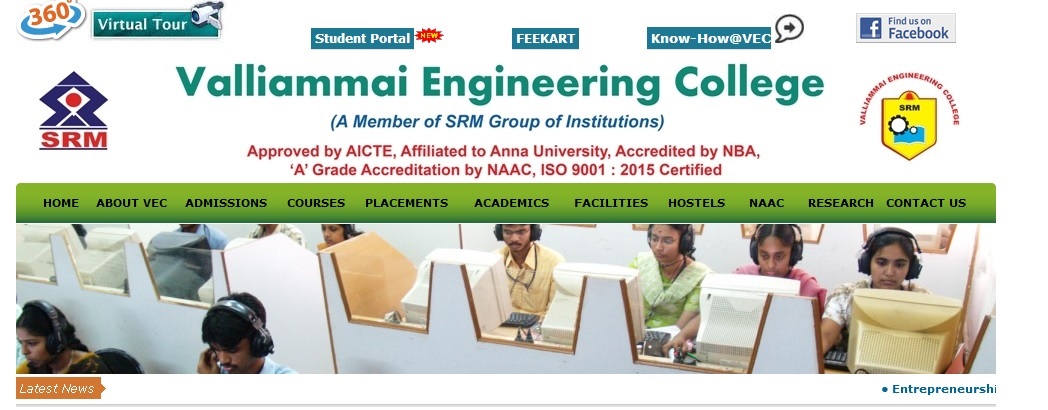EE6351 Electrical Drives and Control B.E Question Bank : valliammai.co.in
Name of the College : Valliammai Engineering College
Subject : Electrical Drives and Control
Website : valliammai.co.in
Document Type : Question Bank
Department : Mechanical Engineering
Semester : III
Degree : B.E
Question Bank : https://www.pdfquestion.in/uploads/valliammai.co.in/1760-Electrical%20Drives%20and%20Control.pdf
Valliammai Electrical Drives & Control Question Paper
UNIT I
INTRODUCTION PART-A (2 MARKS)
1. Define Drives
2. Define Electric Drives.
3. What are the basic elements of Electric Drives?
Related : Valliammai College ME6301 Engineering Thermodynamics B.E Question Bank : www.pdfquestion.in/1764.html
4. Write the classification of Electric Drives.
5. Draw the block diagram of Electric Drive.
6. What is meant by Group drive? Give an example.
7. What is meant by Individual drive? Give an example.
8. What is meant by Multi-motor drive? Give an example.
9. What are the advantages and disadvantages of Individual drive system?
10. What are the advantages and disadvantages of Group drive system?

11. What are the advantages of electric drive over mechanical drive?
12. Mention the drawbacks of electric drives.
13. What are the factors influencing the choice of electric drives?
14. Mention the functions of Power modulators.
15. Compare Individual, Group and Multi-motor drives.
16. What are the motors used in Electric drives?
17. Mention the necessity of power rating?
18. Write down the dissipation equation due to convection process.
19. Draw the heating and cooling curve for a particular electric drive.
20. What are the classes of duty for an electric motor?
21. What is meant by continuous duty?
22. What is meant by continuous duty variable load?
23. What happens if the motor is selected at highest load handling capacity at continuous duty variable?
24. What is meant by time intermittent duty?
25. What is meant by periodic intermittent duty?
26. What is duty factor?
27. Give the assumptions for heating and cooling calculation.
28. What is heating curve?
29. Define Heating time constant (?1).
30. What is cooling curve?
31. Compare A.C drives and D.C drives.
32. What is meant by short time rating of motor?
33. What are the factors that affect the power rating and size of electric drives?
PART-B(16 MARKS)
1. Explain the factors governing the selection of motors.(16)
2. Discuss in detail the determination of power rating of motors.(16)
3. (i).Explain the different types of loading of drives.(8)
(ii).Explain the choice of selection of the motor for different loads.(8)
4. (i).Describe the simplifications based on which the heating and cooling calculations of an electric motor are made.(8)
(ii).Establish the heating time constant and the heating curves.(8)
5. (i).Compare the D.C and A.C drives.(8)
(ii).Write a brief note on classes of duty for an electric motor.(8)
6. Draw the typical temperature rise-time curve and derive the equation for temperature rise in an electric drive.(16)
7. Explain the loading of an electric motor and its duty cycle with a simple diagram.(16)
8. Explain in detail about the various types of electric drives.(16)
9. (a).AT full load of a 10 H.P the temperature rise of a motor is 25°c after one hour and 40°c after two hours. Find (1) the final temperature rise on full load (2) heating time constant of motor (3) half hour rating if iron losses which remain constant are 80% of Copper losses at full load.(8)
(b).The 10 minutes rating of a motor used in domestic mixer is 200 watts. The heating time constant is 40 minutes and the maximum efficiency occurs at full load (continuous). determine the continuous rating.(8)
10.(a). The temperature rise of a motor when operating for 25 min on full load is 25°c and Becomes 40°c when the motor operates for another 25 min on the same load. Determine heating time constant and steady state temperature rise.(8)
(b). The temperature rise of motor after operating for 30 minutes on full load is 20°c and after another 30 minutes 30°c on the same load. Find the final temperature rise and time constant.(16)
UNIT II
MOTOR CHARACTERISTICS
PART-A (2 MARKS)
1. Why motor characteristics are important?
2. Why DC series motor should never be started on no-load?
3. Why a fly-wheel setup is used in DC series motor?
4. Why differential compound motors are not used in practical?
5. What is the main reason of fitting fly-wheel along with the motor?
6. Draw the mechanical (or) speed –torque characteristics of all type of DC Motors.
7. State the condition at which the starting toque developed in a slip-ring induction motor is maximum.
8. State the different modes of operation of three phase induction machines.
9. What is mechanical characteristics of a motor?
10. Give the application where DC Shunt, DC Series and DC Compound motors are used.
11. Draw the torque-slip characteristics of a three phase squirrel cage induction motor.
12. What is meant by braking?
13. Mention the Classifications of Braking.
14. What are the advantages and disadvantages of Electrical Braking?
15. Explain the plugging method of braking.
16. Why regenerative braking is not possible ion DC Series motor without modification?
17. Give the types of braking used for DC Motors.
18. What is meant by Regenerative braking in DC Motor?
19. Mention the demerits of mechanical braking.
20. Give the advantage of dynamic braking.
21. What is meant by rheostat (or) dynamic braking?
22. What is meant by Plugging in DC Motor?
23. Draw the speed-torque characteristics of various types of loads.
24. What are the conditions for the stable operations of the motors?
25. List the electrical braking for DC Compound Motor.
26. Differentiate Mechanical and Electrical Braking.
27. Draw the speed-torque characteristics of three phase induction motor.
28. Write short notes about the different types of loads.